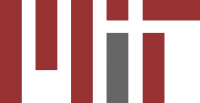Jan 9, 2010
Attendees:
Lisa Breede
Renee Cecile LeBlanc
Mary Ellen Royer
Macall Zimmerman
Peter Brenton
Ana Ludwig
Pam Schickling Buckley
Robin Elices
Jack Defandorf
Brian O'Conaill
Mary Ellen Sinkus
Doreen Morris
Roni Dudley-Cowans
Andreea O'Connell
Olympia Valentine
Hasmik Kouchakdjian
Richard Petruzzelli
Susan Wolfson
Agenda:
Update from OSATT (Office of Strategic Alliances and Technology Transfer)
2:00 – 3:00 pm:
Presenters:
Lesley Millar-Nicholson
Meghan McCollum Fenno
Colleen Leslie - OSATT and RAS (absent)
OSATT (Office of Strategic Alliances and Technology Transfer)
Engaging with Industry: New organization and processes
Current state:
- Engage with community around our vision
- Universities are shifting from government backed engagements to private and other types of funding
- OSATT is envisioning engagement journey map such as:
- Development and identifications
- Competition
- Negotiations
- Contracting
- Alliance Mgt
Areas of interest to address:
What are the formal processes to handle these engagements, who is around to ask questions
These engagements need to be faculty centric
- In reality faculty should be leading, paired with appropriate professional staff along the way/journey
- Idea behind is to become faculty centric, PI, LEAD to handle transition
- We (OSATT) need to propose new processes appropriate to today's needs
What has happened so far:
- Faculty centric communication
- Fast cadence
- Risk mitigation and deal making
- Strategic decision about opportunities
- Connect existing compliance and oversight mechanisms
- Much more coherent view of MIT engagements from the outside perspective
Presenters talked about their website and principals: Engaging Excellence (check out the website), and their three pillars. Additionally, explained about new roles (to be hired, generally, hard to fill in these roles, lots of competition in the area).
OSATT (office of Strategic Alliances and Technology Transfer) general structure consists of:
- TLO
- Catalyst Team, understand what companies are looking for collaborating with faculty (money, etc.), more scientific understanding
- Strategic Transactions Team, here, especially for industry sponsored research, their targeted questions are more business oriented, IP, ownership , etc… to avoid misunderstandings… how to have consistent front end to the sponsors around how to deal with MIT, and avoid confusion (besides research, many things are negotiable). We review and clarify what is important to the company and what is important to us/MIT
- Alliance Mgt Team
- OCR (ILP, Startup Exchange)
OSATT vision is to be PI Centric, chaperon closed-loop success, and lead risk mgt activities.
ENGAGEMENT PHASES and GOALS:
Phases:
Catalysis, Proposal mgt, Negotiations and contracts, Alliance mgt
What is success for OSATT?
- Initiate: complete engagements through MIT. Keep PI apprise of progress and obstacles
- Negotiation side: it means draft and lead negotiations of agreements
Work closely with Catalyst
Work with RAS
- Post execution it means: provide deep awareness of agreement terms and compliance requirements
Support PI on delivering program promise and sponsor communications
Goals:
- To scale up and improve turnaround time
- Combine MTA, NDA and DUA under same umbrella to speed up signature/approval processes
- The office is looking to improve current processes, bring consistency, utilize standardization and best practices
- Sponsors/foundations now are looking for some ROIs
OSATT FY20 timeline/goals
FY 19-20
- Working Group to analyze problems and propose solutions
Sep 2019
- MIT Announce dissolution of OSP and pending stand up of 2 new offices RAS and OSATT for spring FY20 launch
- OSATT is hiring and engaged in process developments (work flows, process improvements
- Catalyst supports 20+ new engagements across the school
- In addition to legacy negotiations, strategic transaction team negotiating multiple Catalysis driven engagements
- Identification of opportunities, working with research admin offices on process
IAP FY20
- roll out, begin with one DLC for industry engagements
SPRING FY20
- Increase DLC communications, scale roll out to DLCs as OSATT staffs up (hiring and onboarding of OSATT Cat/STO/AM staff)
Question: As a DLC member, when is the right time to start the conversation with OSATT?
Response: At the moment contact Lesley
End of OSATT Presentation
3:15 – 3:30
Future topic suggestions
- DEMO by materials sciences department (they developed some interesting admin solutions)
- Follow up discussion:
Processes and best practices to support smaller scale technical implementation for DLCs (not a solution for all, but works good enough for smaller scale departments)
3:30 – 4:00pm:
Breakfast update and planning
- Key note speaker
- Opening remarks
- Table activities
- Logistics
- Space
- Number of invitees (Aos, Assistant deans, etc… department HRs,)
To Dos:
- Mary Ellen Royer to follow up with Ronnie Hass (table and number of tables set up at Media Lab space)
- Mary Ellen Royer needs the number of attendees (tentative) for table set up and final arrangements


